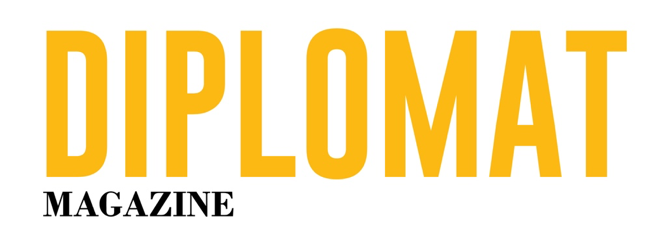A brief guide for Diplomats (and non-diplomats)
By Eelco H. Dykstra, M.D.
You may have noticed that in the last few years, the use of the term “Resilience” has skyrocketed and now has become a buzzword. This was also noticeable during the recent NATO Summit in The Hague. In and by itself, this shouldn’t surprise us since many of us feel the world we live in has become increasingly ‘Vulnerable, Uncertain, Complex, and Ambiguous’ – or “VUCA,” as it is known.
The term ‘Resilience’ however, has been around for a long time, something that those who use the word may not always be aware of. Time therefore to take a brief dip – with a Thought and a Smile… – into understanding the origin, meaning, use and limitations of ‘Resilience.’
So, here’s a brief guide, for diplomats as well as non-diplomats.
Origin and development of ‘Resilience’
Fingers are pointed here to an obscure branch of science called ‘Materials Technology’ where the word was used to describe the (cap)ability of matter to return to its original form after deformation.
In the latter part of 20th century its use expanded to other scientific domains such as (small island) ecology and (mental) health. During the 1980’s it developed into a hot topic in the private sector (business continuity) and public administration (“COOP”: Continuity of Operations).
Resilience nowadays is something that links negativity (‘jeopardy’) with positivity (‘opportunity’), thus functioning as a bridge between ‘Risk’ (= problems) and ‘Resilience’ (= solutions).
Intermezzo…
Let’s use an example from the world of sports to clarify this essential point.
- Most coaches, teams, clubs, and fans continuously ask: “How can we score goals?” (= opportunity).
- Smart(er) coaches, teams, clubs, and fans, however, also ask this question: “What prevents us from scoring goals?” (= jeopardy)
- The most successful of coaches, teams, clubs, and fans ask and answer both questions simultaneously. Like a bridge. Like Resilience. Transitioning from ‘Risk’ to ‘Resilience.’
How do we define ‘Resilience’?
The most practical definition is this one:
CAPACITY
Resilience = —————–
VULNERABILITY
Please note that when we talk about CAPACITY, there is a distinction between Coping capacity (for rapid-onset problems) and Adaptive capacity (for more gradually developing problems).
Confirmed during the NATO Summit but also on a more regular basis at local, national, and international levels (such as other The Hague-based entities like OPCW), one can strengthen resilience by increasing capacity, by reducing vulnerability or, preferably, by doing both.
Lastly, a note of warning. When defining ‘Resilience,’ be aware of differences in semantics, terminology, and connotation. In the Netherlands for instance, the Dutch government considers the term ‘weerbaarheid’ as synonymous with ‘resilience.’ When we translate ‘weerbaarheid’ however, we end up with ‘the ability to resist’ and the underlying suggestion is that there is an external enemy.
Resilience of ‘what’?
This question can be rephrased as: “What should we be afraid off?” Well, the answer to that one is not too difficult: a disruption of essential services.
For what the ‘Top-4-Essential-Services’ looks like for all things alive, [= Oxygen, Water, Calories, Shelter], you can also visit my previous column “Biology 101 for Diplomats”.
One could also rephrase this question as: “What makes a person or organization ‘resilient’?”
Aside from increasing capacity and decreasing vulnerability (see above), Diane Coutu researched for years what the personal and institutional characteristics were that would favour Resilience. She shared her findings in the Harvard Business Review in 2002.
She concluded that there were three essential ingredients needed to be(come) resilient:
- SEE THINGS FOR WHAT THEY ARE
[= and not what you want them to be – or are afraid they might be…]
- GIVE MEANING TO HARDSHIP
[= don’t sit in a corner crying and wait for help but get up and do something…]
- HAVE AN UNCANNY ABILITY TO IMPROVISE
[= this includes the option to throw out all pre-existing plans, procedures, and protocols…]
Amanda Ripley confirmed that these three elements indeed needed to be present at the same time (!) in her book “The Unthinkable” (2008).
So yes, Resilience is a good thing.
Do you want a few more things to mull over?
- From a philosophical perspective, one might say that the only entity that is truly resilient by design (and not by retrofit) is ‘Nature.’
- From an operational perspective, yes, reducing vulnerability and increasing the capacity to cope or adapt, is highly advisable.
- Finally, remember that being resilient is not so much a status or a box-to-be-ticked, but a mindset, a mentality.
Which leaves all of us to ponder the following question, with a thought and a smile:
So, how ‘resilient’ are we, really?
About the author:
Once dubbed a ‘Global Nomad’ in East Africa, Eelco H. Dykstra is a seasoned international crisis and emergency expert. As a true ‘Prac-Ademic’, he blends – also in his column “A Thought and a Smile” – his innate optimism with knowledge from his practical experience and rigorous fact-finding.
Aside from being founder/chair of the Daily Impact Emergency Management (DIEM) network and a visiting professor in South Africa, he initiated the ’20/20 Vision’ program for the dual purpose of strengthening value-based resilience and overcoming the obstacles that stand in the way of implementing lessons (to be) learned. Eelco has been a correspondent, written multiple books and articles and continues to work extensively with media, government, business, NGO’s and community-based initiatives. In short, Eelco is a transdisciplinary and trans-cultural multi-tasker – just like diplomats are.
Among his hobbies are cooking and playing the cello – see picture, taken by Tom Manning, during an impromptu performance with the Soweto Youth Orchestra.
Eelco H. Dykstra Professor (visiting), Adaptation and Resilience, University of South-Africa, UNISA. Chair, ’20/20 Vision’ Program: How do we go from ‘Risk’ to ‘Resilience”? Founder, Daily Impact Emergency Management (DIEM) Network
www.diem.nu www.20outof20.vision / eelco.dykstra@diem.nu
https://www.linkedin.com/feed/update/urn:li:activity:7110954128721199104




